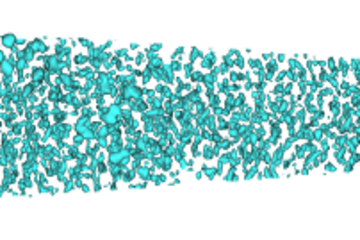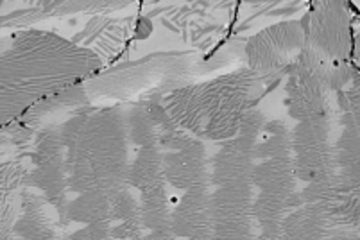All genres
521.
Poster
Cathodic Delamination by a Combined Computational and Experimental Approach: The Aklylthiol/Gold Model System. Multiscale Material Modeling of Condensed Matter, MMM2007, St. Feliu de Guixols, Spain (2007)
522.
Poster
Intensity Modulated Photo Electrochemistry of Laser Irradiated Semiconductors. 6th International Symposium on Electrochemical Micro & Nanosystem Technologies, Bonn, Germany (2006)
523.
Poster
Oxygen Reduction at Thiol SAMs on Au (111) – A Combined Experimental and Modelling Approach. The 210th Meeting of The Electrochemical Society, Cancun, Mexico (2006)
524.
Poster
Initial oxidation of Fe-Cr alloys: In situ STM amd ex-situ SEM studies. 6th International Conference on the Microscopy of Oxidation, Birmingham, UK (2005)
525.
Poster
Finite Element Simulation of the Cathodic Delamination Process of Coatings on Metal Surfaces. 55th Meeting of the International Society of Electrochemistry, Thessaloniki, Greece (2004)
526.
Poster
Conducting polymer coatings for corrosion protection: Pros and cons. Gordon Research Conference on Aqueous Corrosion, New London, NH, USA (2004)
527.
Poster
Formability of Ultra-Thin Plasma-Polymer Films Deposited on Metal Sheet: Mesoscopic and Nanoscopic Aspects of Defect Formation. Symposium on Thin Films - Stresses and Mechanical Properties X held at the 2003 MRS Fall Meeting, Boston, MA, USA (2003)
528.
Poster
Langmuir-Blodgett deposition technique: Controlling the molecular structure at the substrate/monolayer interface. Nanostructure Workshop MPG & UCSB, Naurod, Germany (2002)
529.
Poster
Charged Langmuir-Blodgett Films on a metallic Surface: Composition and Structure of the Interface. ISE2002, Düsseldorf, Germany (2002)
530.
Poster
SKPFM for the investigation of nanoscopic aspects of delamination. ISE2002, Düsseldorf, Germany (2002)
531.
Poster
Understanding the Role of Copper in FFC on aluminium alloys. 53rd Meeting of the International Society of Electrochemistry, Düsseldorf, Germany (2002)
532.
Poster
Design of materials with improved delamination behaviour: The system zinc-magnesium. NH Gordon Conference on Aqueous Corrosion, New London, NH, USA (2002)
533.
Teaching
Zukunft sichern: Korrosionsforschung als ein wichtiger Faktor. Lecture: SS 2024, Ringvorlesung, Ruhr-Universität Bochum, June 13, 2024
534.
Teaching
Surface Science and Corrosion. Lecture: WS 2024/2025, Ruhr-Universität Bochum, October 01, 2024 - March 31, 2025
535.
Teaching
Surface Science and Corrosion. Lecture: WS 2023/2024, Ruhr-Universität Bochum, October 01, 2023 - March 31, 2024
536.
Teaching
Surface Science and Corrosion. Lecture: WS 2022/2023, Ruhr-Universität Bochum, October 01, 2022 - March 31, 2023
537.
Teaching
Surface Science and Corrosion. Lecture: WS 2021/2022, Ruhr-Universität Bochum, October 01, 2021 - March 31, 2022
538.
Teaching
Surface Science and Corrosion. Lecture: WS 2020/2021, Ruhr-Universität Bochum, October 01, 2020 - March 31, 2021
539.
Teaching
IMPRS-SurMat Lecture: Corrosion. Lecture: SS 2020, University of Duisburg-Essen and Ruhr-Universität Bochum, 2020-04 - 2021-07
540.
Teaching
Surface Science and Corrosion. Lecture: WS 2019/2020, Ruhr-Universität Bochum, October 01, 2019 - March 31, 2020











